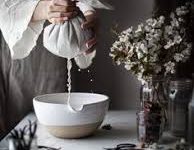
Banana is a worldwide important fruit crop with a production of 97.5 million tonnes. It helps the livelihood of millions of people in India. With a total annual production of 16.91 million tons from 490.70 thousand hectares, a national average of 33.5 tons/ha. Maharashtra ranks first in production with 60 tonnes per hectare. Bananas account for 20% of the total cropped area in India.
Jalgaon is a significant banana-producing district of Maharashtra, spread over 50,000 hectares. But most bananas are grown by planting suckers. The development of technology in agriculture is very rapid, resulting in the development of tissue culture techniques. Banana contributes 37% to the total fruit production in India.
For the growing Procedure, the tractor is the essential part of the banana cultivation; thus, we suggest the Swaraj 735 XT tractor is the best in this farming procedure. Apart from this, you can use the Powertrac 434 tractor. Along with this, Powertrac 439 is also the best tractor.
Cultivation of Banana – Agro-climate
Banana is a tropical crop, growing well in the temperature range of 13ºC – 38ºC with an RH regime of 75-85%. Cultivation of this crop in India is done by selecting suitable cultivars such as Grandnine in humid tropical to dry mild subtropical regions.
Normal banana growth starts at 18ºC, reaches an optimum at 27ºC, then decreases and stops at 38ºC. The sun is scorching due to the high temperature. In addition, a high-velocity wind of more than 80 kmph damages the crop.
Cultivation of Banana – Soil
Banana’s soil should have good drainage, moisture and adequate fertility. Deep and rich loamy soil with a pH between 6-7.5 is the best for banana cultivation. Soils with poor drainage, poorly aerated, and nutrient-deficient are not suitable for bananas. In such a way, calcareous soils and Saline soils are not suitable for banana cultivation. Farmers should avoid the soils of low lying areas, which are very sandy with poor drainage and heavy black cotton.
Soils that are neither too alkaline nor too acidic, have high nitrogen content, adequate phosphorus levels, and are rich in organic matter containing plenty of potash are good for bananas.
Cultivation of Banana – Varieties
Farmers can grow the banana under production systems and diverse conditions. Therefore, the selection of varieties is based on many varieties catering to many kinds of situations and needs. However, around 20 cultivars are Nendran, Red banana, Nyali, Safed Velchi, Basrai, Ardhapur, Karpuravalli, Karthali, Grand Naine, Dwarf Cavendish, Robusta, Monthan and Poovan etc.
Grandnine is gaining popularity and may soon be the most preferred variety due to its tolerance to biotic stress and good quality bunches. In addition, the fruit develops an attractive uniform yellow colour with better quality than other varieties.
Cultivation of Banana – Planting
Preparation of land:
Plough the land thoroughly at least 3-4 times, and during the last ploughing, add about 10 tonnes of well-decomposed dung or manure and mix well or 10-15 kg of dung per pit. 60x60x60 cm dimensions add manure.
Selection of Suckers:
Select ‘Sword Suckers’ broad corn with narrow sword-like leaves from mother plants free of viral, fungal and bacterial diseases. The suckers should be 3 to 5 months old, uniform in size, weighing 1-1.5 kg for Nandan, Rasthali, Ney Poovan and Poovan banana varieties. Long-duration varieties like Karpurvalli and red banana should use slightly larger suckers weighing 1.5-2.0 kg.
For planting ’tissue culture’ plants, the hardy secondary plant should be approximately 30 cm tall, 5 cm in diameter, with at least five fully open healthy leaves and true to type.
Sucker Treatment and Planting:
Selected suckers should be ‘pared’ by trimming all roots and the superficial layers to remove any rotten part of the corm. Dip parade suckers in a solution of 0.2% carbendazim (2 g/L of water) for about 15-20 minutes as a prophylactic measure against Fusarium wilt disease.
Keep the treated suckers in the shade overnight before planting. Then, plant the sucker in the centre of the pit and tamp down the soil firmly around the sucker.
To protect the plants from nematode attack, apply 40 gm Carbofuron granules per pit and irrigate the field thoroughly. One week before planting in case of tissue culture plants, to prevent nematode infection and bacterial rot (Erwinia rot) disease, apply 10 gm Carbofuron and 1.0% bleaching powder or 0.2% Emisan respectively dipped in 100 ml of water in a polythene bag.
In all the processing, we need a tractor to help in growing the crops well. Therefore you can choose the Swaraj 742, which is often useful in growing Bananas. Other than this, you can use the Powertrac 439 tractor in such a way that the Powertrac euro 60 tractor is also best.
For more information regarding the cultivation of bananas, stay tuned with us.



